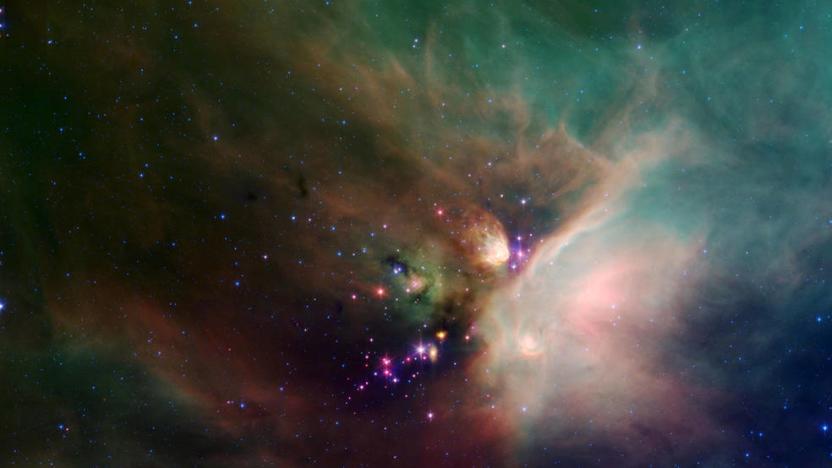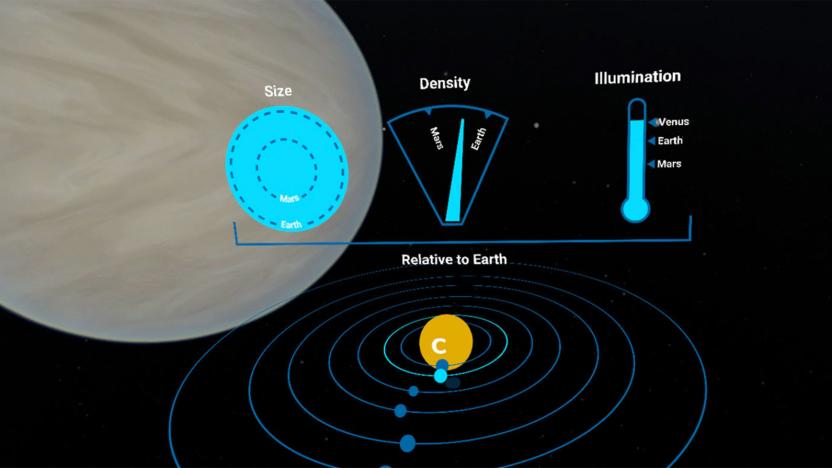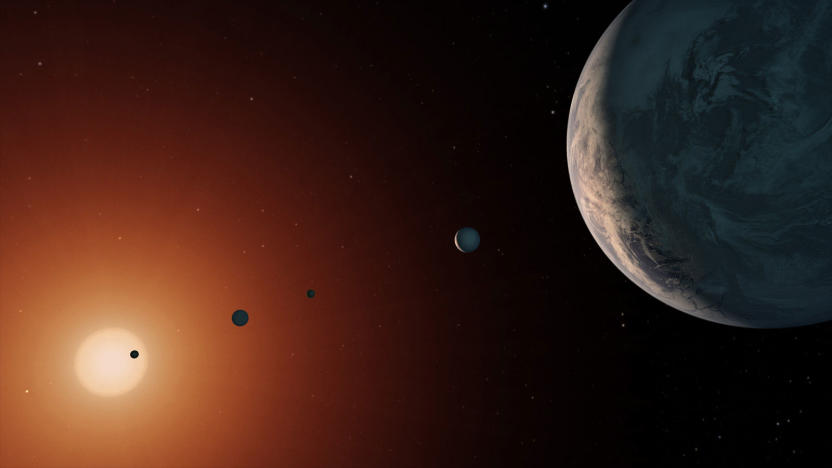trappist-1
Latest

NASA decommissions Spitzer Space Telescope after 16 years of service
NASA is flipping the switch on the Spitzer Space Telescope today. The observatory has made groundbreaking discoveries about the universe since its launch in 2003, from imaging some of the oldest stars in the universe to detecting the light reflected by exoplanets. The Spitzer was previously scheduled to go offline in 2018, but has continued operating due to NASA's followup telescope being postponed. With the James Webb Space Telescope nearing completion, Spitzer's mission is over.

NASA apps take you to space with VR and selfies
NASA's apps tend to be all-business, but it's livening things up this time around -- the administration has released two apps that go beyond dry scientific explanations. The most intriguing is likely Exoplanet Excursions, a VR app for Oculus and HTC Vive headsets. The 3D experience lets you fly through the TRAPPIST-1 system and see artists' renditions of its numerous Earth-sized planets, complete with comparisons to planets around our home star.

The TRAPPIST-1 star system may be too old for life
We hate to further quash hopes that the TRAPPIST-1 star system can harbor life, but... it's not looking great. Researchers have determined that the dwarf star is between 5.4 billion years old and 9.8 billion years old, or considerably older than the 4.5 billion years of the Solar System. That age isn't necessarily bad, but it increases the likelihood that any life-supporting planets around TRAPPIST-1 lost their atmospheres and water to billions of years of high-energy radiation. And even if their atmospheres were thick enough to block the radiation, there's a possibility that a Venus-like runaway greenhouse gas effect cooked the planets' surfaces.

NASA offers first look at planet-rich Trappist-1 star system
NASA was quick to offer conceptual images of Trappist-1 and its abundance of Earth-sized planets. But what does the star system look like, really? At last, now we know... sort of. As part of a raw data release, NASA has offered a simple, 11-by-11 pixel animation that shows the dwarf star as it was on February 22nd. Technically, you're looking at a target pixel file that represents the light levels the Kepler space telescope caught while studying Trappist-1 for an hour. You won't see planets, unfortunately -- an Earth-like planet would barely make a blip in the brightness levels, even if it crossed directly in front of the star.

Visit NASA's newly discovered planets in 'Elite: Dangerous'
Sadly, it's unlikely that you'll ever visit the Trappist-1 system's newly-discovered Earth-sized planets in your lifetime... not unless someone develops near-light speed travel, anyway. However, you'll at least have the option of a virtual tour. Frontier Developments is promising Ars Technica that the second Elite: Dangerous version 2.3 beta will let you visit Trappist-1 and its seven worlds. The developers are really just modifying an existing system in a similar location (Core Sys Sector XU-P a5-0), but that still means that you'll get a rough sense of what it would be like. You'll get to land on at least some of them, two of which will be Earth-like.

